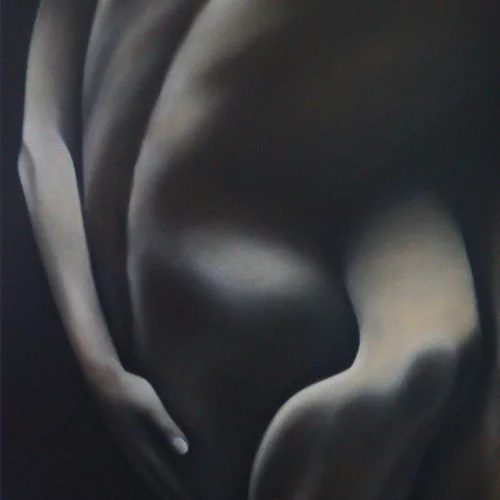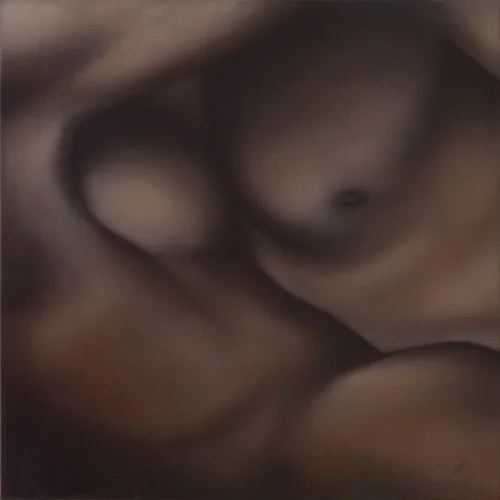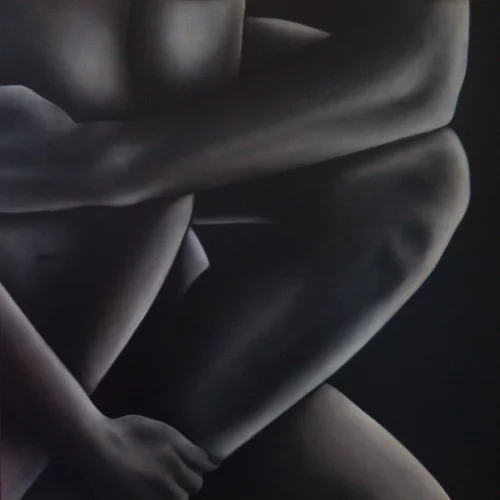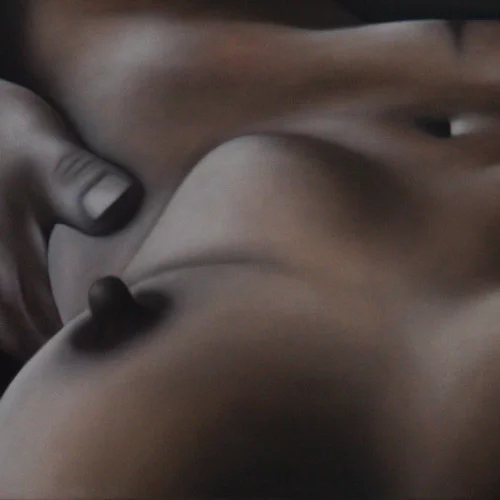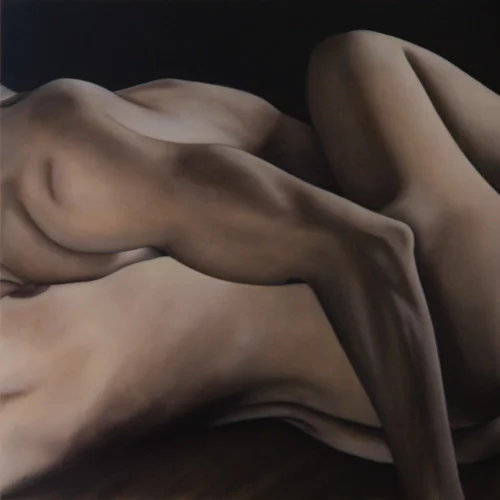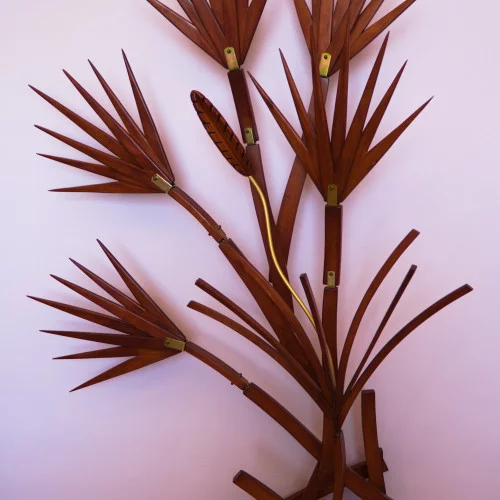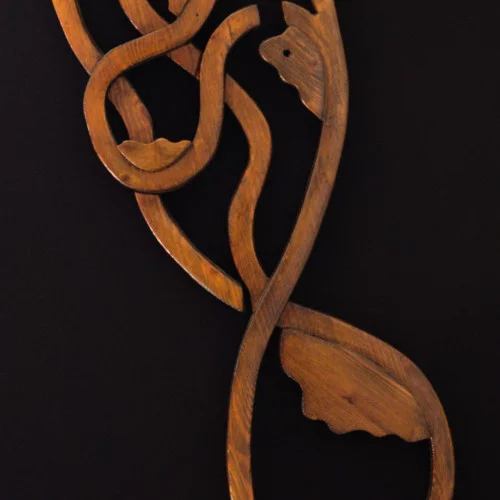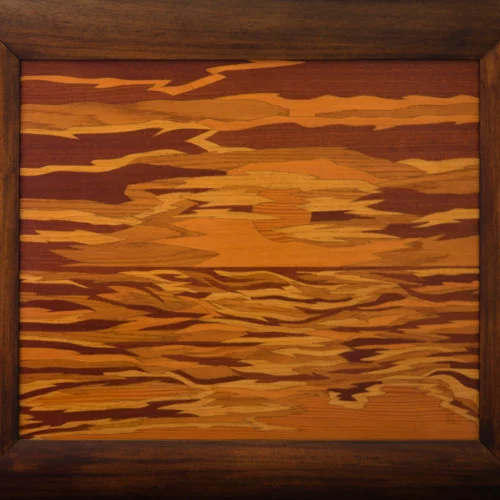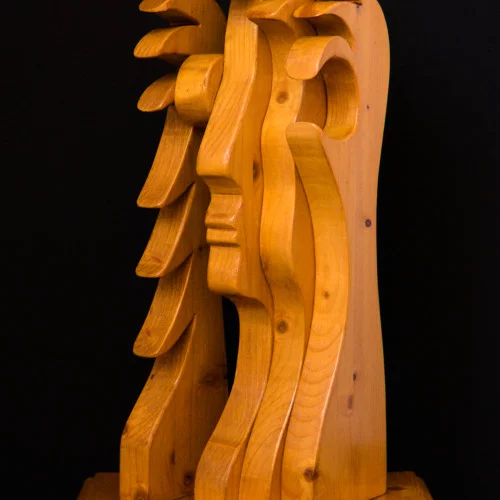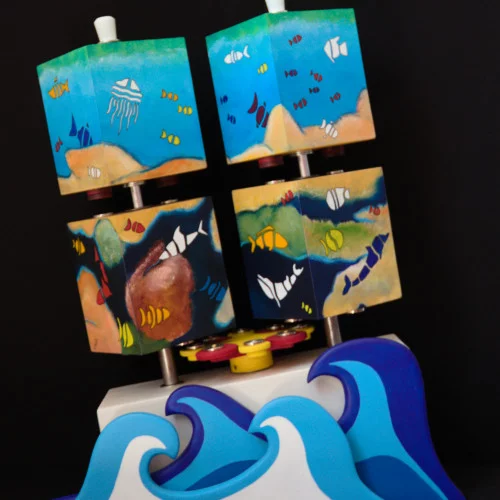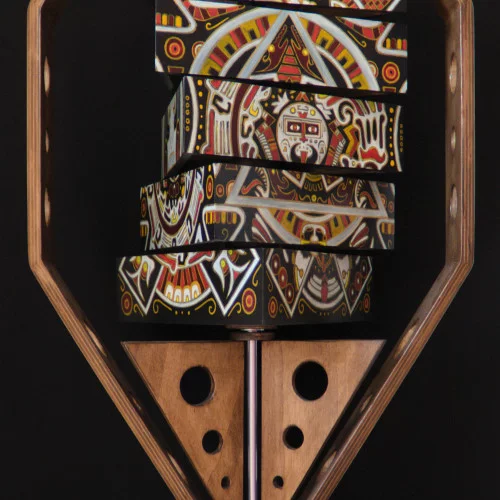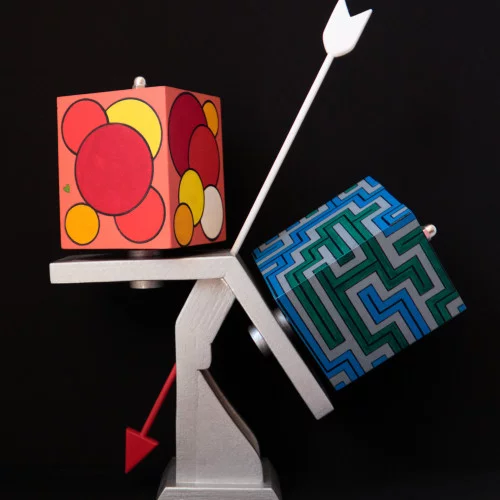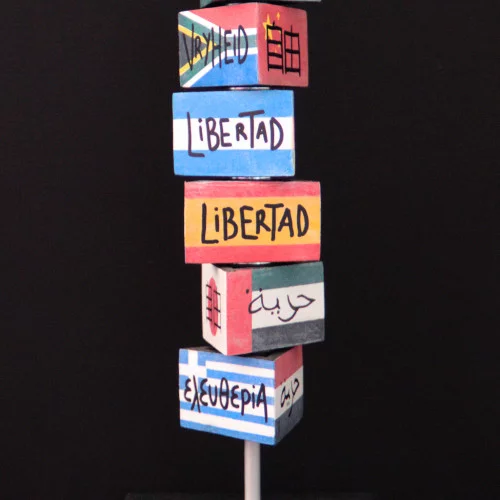ENEA MARTELLONI
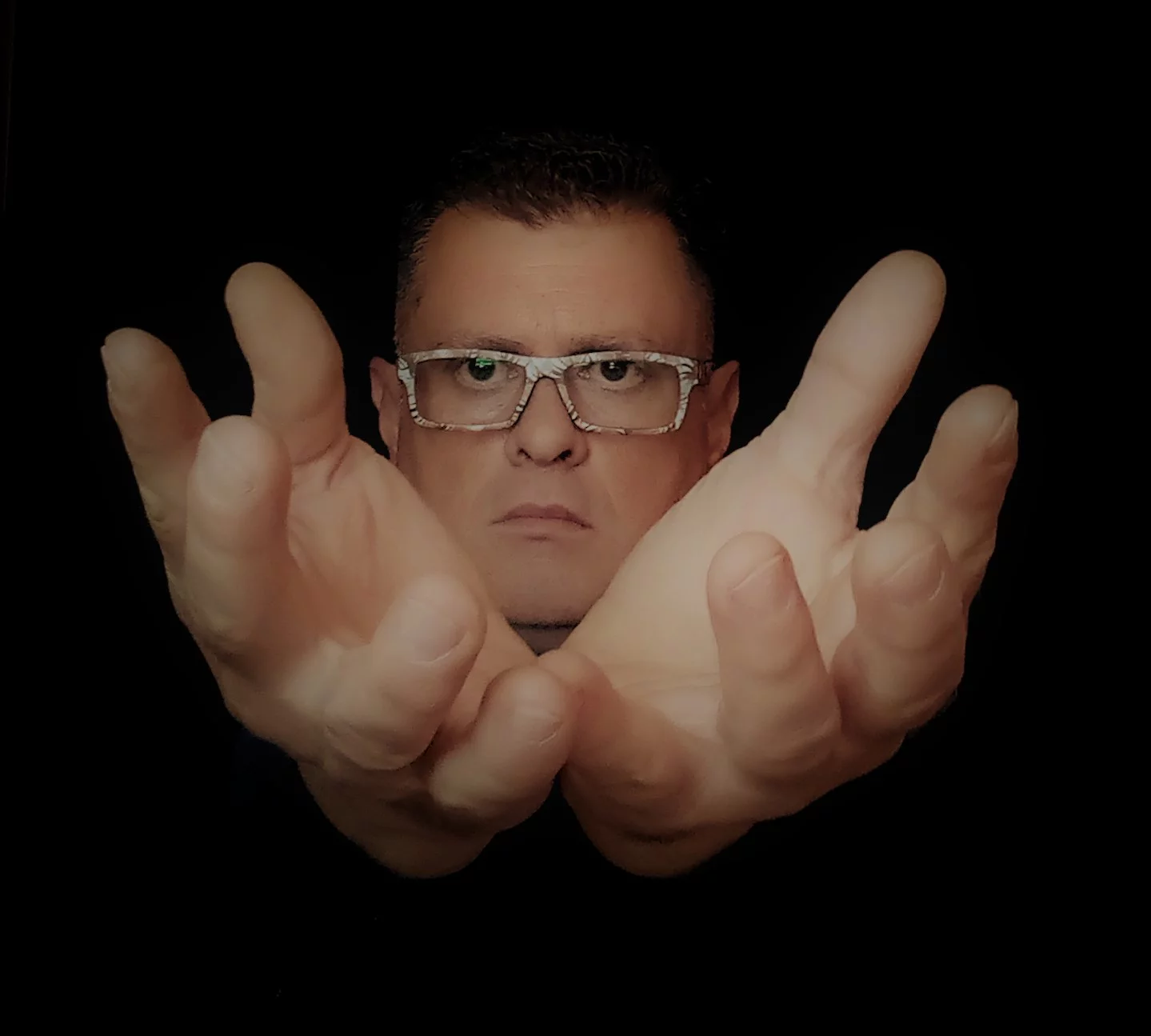
Enea Martelloni was born in Livorno where he still lives. His roots are in the field of design and craftsmanship, combining his passions for cabinetmaking and machines together with painting. His early works start from an almost hyperrealist figuration, often details of naked bodies modeled by a chiaroscuro that abstracts them into pure plastic values. The medium of b/w photography is clear, sometimes borrowed from other professionals such as Guido Argentini, with Enea reworking pieces from a well-known series of nudes. If this series of works halts and immobilizes this pulsation of bodies, its results arise directly from a desire to create images throbbing with their own life, transforming them or even changing them among themselves. Not the cold kinematics of so much of Op Art, but the playful DIY that finally unites his earlier personal passions to give us a new educational game, or a customizable work. Clearly, Enea asks his audience not to stop in contemplation of his works, but to interact by deconstructing and reconstructing images (according to pre-defined combinations), namely, by sharing their creative actions with him. He asks his audience not only to understand these pathos-filled fragments of a life lived, but to patiently build from these bits and pieces a free-associative web (for images) able to reinterpret reality and suggest additional improvements and transformations.
One way is to make people think about the precariousness and fragility of humans and of all things, in a continuous flow where even opposites dissolve and outwardly recognizable forms are shattered to be reassembled. Temporary balances are torn apart and reconstructed, disrupting their equilibrium and creating new unexpected, polymorphous forms, while a scream is transformed into a smile, suffering into joy, and seriousness into a game.
[Roberto Agnoletti]
